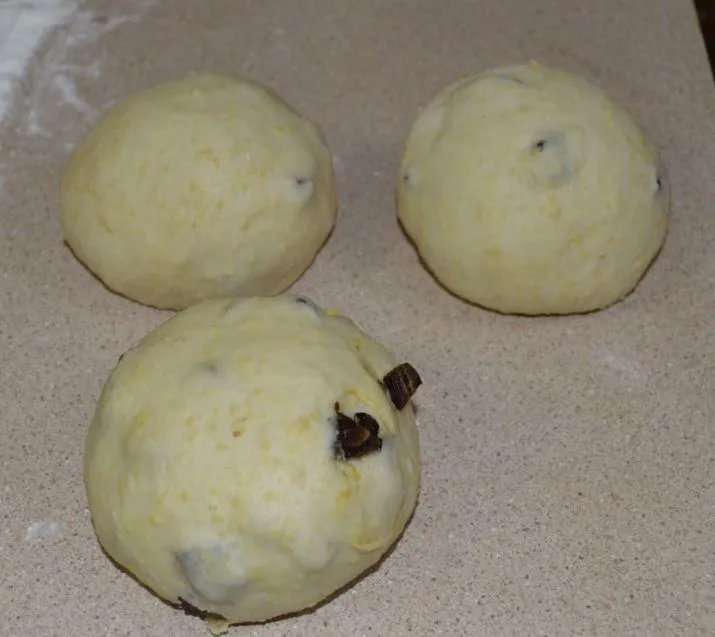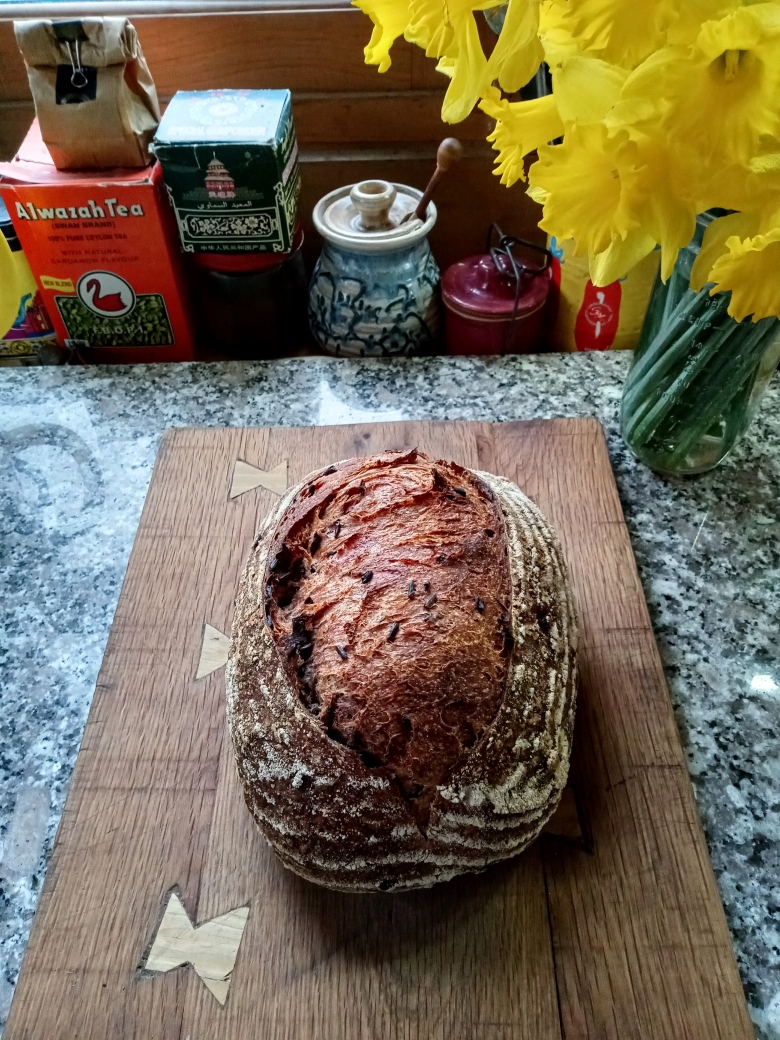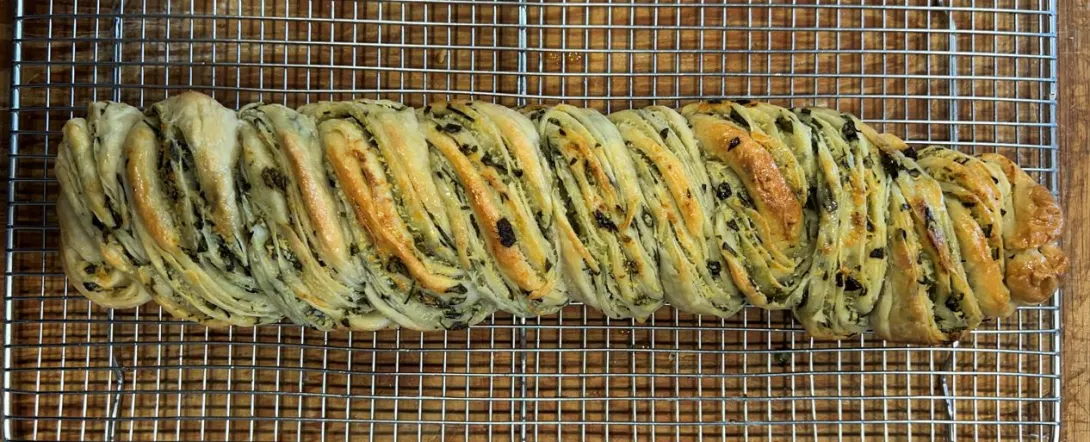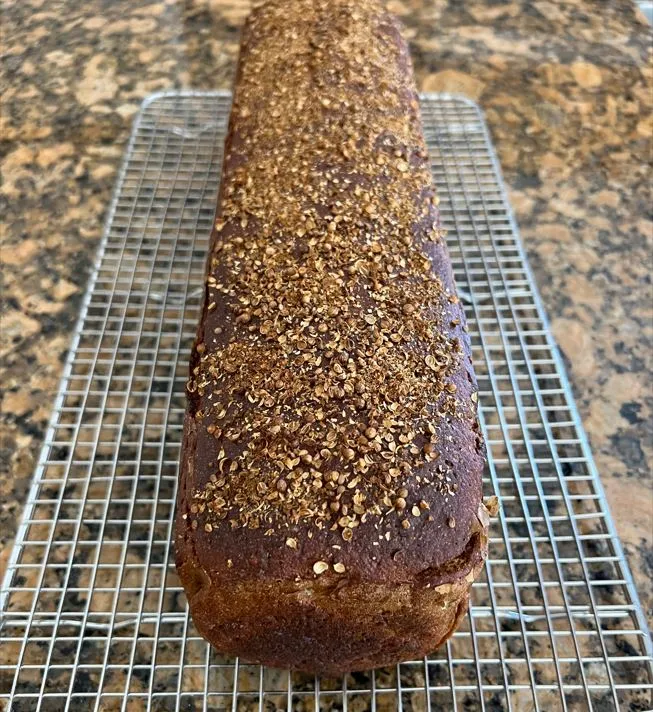Croissant - my journey to find the right recipe
My 1st try - with all-purpose flour and Candia butter 82% fat
- Log in or register to post comments
- View post
- Nourl's Blog
My 1st try - with all-purpose flour and Candia butter 82% fat

i have been playing with Lupin Flour and Lupin Flakes recently and here is my latest bake i call this one Flakes and Dates. I have been able to get the Lupin content up to 25% which is pretty good i have even managed 30% recently. I started adding Lupin flakes to the flour at a 20% and 5% ratio and was happier with the results. Anyway i suddenly thought why stick to that ratio and have tried an even split 12.5 / 12.5% and also decided to try a fruit dough to boot.
My partner requested another Roman Pizza so how could I say no? I wanted to use up a bit more of the whole Kamut that I have left so changed the spelt to Kamut. Also having made this once I wanted to improve it, the last time the crust didn’t brown as well as I would have expected for the baking time. So I added a tiny amount of sugar and some diastatic malt. This worked well to improve the browning of the crust so I am happy with that.
| future bakes... |
2023-8-10 | Stan's Orange Raisin Rye with Clas by Yippee https://www.thefreshloaf.com/node/68380/20210604-stans-wholegrain-pecan-orange-raisin-rye |
|
I came across this purple sticky rice while stocking up on some pantry dry goods recently. I've never heard of it before, but it has a nice rich flavor, and I've enjoyed working it into my recent breads.
My first go-round was a 50-50 white/whole wheat loaf

I think amounts were about
200g Maine Grains hard red spring whole wheat
200g KA special patent
~3tsp salt
50g starter
@ 80% hydration I think
I needed more bread, so what’s new? Wanting some whole grain bread though I decided to use some spelt with the whole wheat for some variety. I also wanted some seeds in this bread because I love seeds so decided to add pepitas and sunflower seeds at 10% each.

Today's bake: Goat Cheese & Herb Babka
Source: Clotilde Dusoulier - Chocolate & Zucchini #cnzrecipes
Note: Orig TDW 0.650kg & Pan 30x10x10cm; New TDW 0.900kg & Pan 40x10x10cm
This first time I tried making one of these I used Full Proof Baking’s Kristen’s formula. It was great, but I had some technical issues related with shaping and transferring the dough from the countertop into the pan. This time I thought I’d try a different one, Maurizio’s The Perfect Loaf formula. Some of the minor changes I made are in brackets.
This recipe is for 11”x17” that I have decreased to 80% of the original weights.

Today's bake: Lyubitelsky Rye (Russian)
Source: Breadlines Spring 2016 - BBGA by Stanley Ginsberg
Note: Changed TDW from 1.25 kg to 2.188 kg., Molasses - Blackstrap, Unsulphured for Dark Molasses
My daughter in law has given me some starter. I have already made one nice sandwich loaf with it. Now I'm trying to figure out a feeding schedule. I tried putting it in the fridge, but that was a disaster. It got a thick "skin" on the outside and didn't rise at all.
I took it out, got rid of what looked weird, discarded all but 100 gr, then added 100 gr spring water, 100 gr A/P flour. (1:2:2, right?) It doubled in 11 hours (although it did not do anything at all for the first 4 hours).